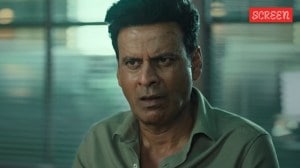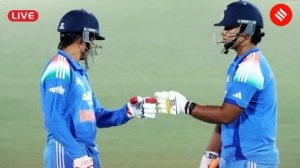US ignored report on N-thefts by China: NYT
WASHINGTON, MARCH 6: In a stunning disclosure that could convulse US-China relations, some American officials are now acknowledging that ...

WASHINGTON, MARCH 6: In a stunning disclosure that could convulse US-China relations, some American officials are now acknowledging that Beijing stole nuclear secrets from US labs that helped it overcome a technological lag and build a new class of nuclear weapons.
The astonishing story of Chinese espionage in the nuclear field was first outed earlier this year by a Congressional panel in a 700-page secret report. But in a major front paged story on Saturday, the New York Times provided a detailed account of the subterfuge and chicanery that accompanied the expose.
In essence, the Times said that although authoritative investigators blew the whistle on the Chinese theft several months ago, influential sections of the Clinton administration questioned the gravity of the findings and stalled on taking action for fear of hurting ties with Beijing. Some US officials assert that the White House sought to minimise the espionage issue for policy reasons, the Times said. This conflicted withtheir China policy. It undercut the administrations efforts to have a strategic partnership with the Chinese, it quoted one unnamed official as saying.
According to the gradually emerging story, the espionage is believed to have begun in the mid-80s, but was not detected until 1995 when US experts analysing Chinese nuclear tests found similarities to America’s most advanced miniature warhead W-88. Although the Chinese had nuclear weapons, their designs were said to be clunky and a generation behind the newer US designs. They were unable to produce small warheads that could be launched from a single missile at multiple targets.
Filching the W-88 designs from the US government laboratory in Los Alamos helped them overcome this lacuna.
Two major figures star in this espionage thriller which one intelligence official said was far more damaging to national security than Aldrich Ames. The alleged spy is an unnamed Chinese-American scientist who works at Los Alamos, where the US developed its first atomicbomb. The hunter was Notra Trulock, an intelligence official with the Energy Department, who according to some accounts has now been shunted out after he blew the whistle on the case.
According to the NYT account, American weapons experts at Los Alamos were first alerted in 1995 to the eerie similarities between the latest US and Chinese bomb designs when they were poring over data from Chinese nuclear tests. They brought their findings to Trulock.
Investigations pointed to the Los Alamos lab, where the W-88 was developed, as the most likely source of the leak. By February 1996, the FBI and energy department officials had narrowed focus to five possible suspects, including a Chinese-American computer scientist who stuck out like a sore thumb.
The suspect’s wife is said to have been invited to address a Chinese conference on sophisticated computer topics in China even though she was only a secretary at Los Alamos. The husband, the real expert, had accompanied her.
In early 1996, Trulock traveledto the CIA to brief the spy masters there of the evidence his team had gathered about case. As Trulock gathered his charts and drawings and wrapped up his top-secret briefing, the agency’s chief spy hunter, Paul Redmond, sat stunned, the Times reported.
This is going to be just as bad as the Rosenbergs, the paper quoted Redmond as having said then. The Rosenbergs were accused of stealing nuclear secrets from Los Alamos for the then Soviet Union at the dawn of the nuclear age.
But despite having zeroed in on the suspect in early 1996, there were inexplicable delays in investigating the case and shutting down the leaks. Officials waited more than a year to act on the FBI’s 1997 recommendations to improve security at the weapons lab and restrict the suspects access to classified information.
In this time, Trulock and his sleuths also discovered that the Chinese had other ongoing spy operations at the weapons lab, a much broader pattern of access to nuclear weapons design.
It was only a few weeksago, after the case was exposed by energy department officials like Trulock and an agitated Congress, that the administration moved to question the suspect and administer lie-detector tests, which he apparently flunked.
Throughout the government, the response to the nuclear theft was marked by delays, inaction and skepticism — even though senior intelligence officials regarded it as one of the most damaging spy cases in recent history… And at the White House, senior aides to Clinton fostered a skeptical view if the evidence of Chinese espionage and its significance, the Times reported.
The key administration official who was named in the Times story as questioning the gravity of the findings is Gary Samore, a National Security Council pointman who deals with proliferation matters. After receiving a briefing from Trulock in August 1997, Samore asked the CIA to get a second opinion on how China developed its smaller warheads.



- 01
- 02
- 03
- 04
- 05




























